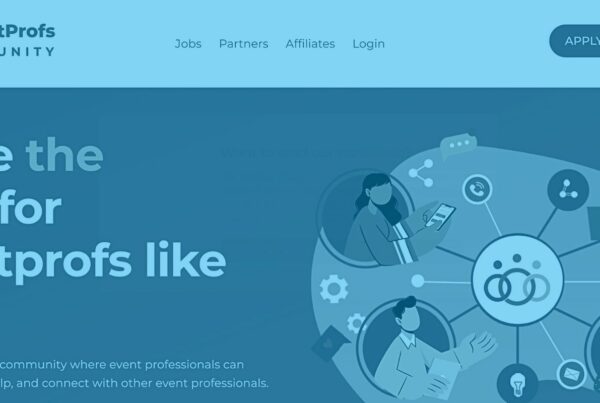The event management industry lacks robust software designed for the unique needs of the event management industry. Many event planners rely on tools not made for the industry and attempt to find alternative solutions for the tasks they must accomplish.
In today’s episode, Will and Brant talk about the event management industry’s unique client base and where event management software fails to meet client needs. Possible solutions to the lack of budgeting and profit margin projection tools include templates and building your own tool. Will and Brant explain how these options may work and how they have failed in the past.
Event Management Is Highly Collaborative
Will Curran introduces the conversations with, “I find we all end up relying on tools not made for our industry. There are many tools outside the event industry working to broadly match tons of industries. We end up getting a good tool, but there are a couple of event industry-related features that we want in order to successfully plan an event.”
He believes the event management industry is fundamentally different from other industries. “I think one big thing about our projects in the events industry is that we touch so many different people in so many different areas. You might have the CEO submitting a presentation, a marketing person planning the event, and the IT person verifying an API integration. You end up having so many stakeholders involved, which is why planning events can be so hard.”
Missing Software Features
Brant adds an important point about how people continue to work with software that doesn’t fit their needs. “I think it’s why we find folks reverting to free software. So much is done in these free software solutions, but they’re still missing important features. The more we can build key features into a solution of some kind, and the more we can move away from these things that aren’t purpose-built, the better.”
Budgeting
A critical task for event planners is managing the event budget. “One of the things I’ve never seen in an event management software is the budgeting and profitability aspect,” says Will. “We’re managing multiple vendors and lots of attendees, and our job is to know if we have a margin on the event. We would love the ability to build those budgets.”
“But I found if I just want to build up a budget and know what my profit margin is at the bottom, I’d then like to be able to execute that event and compare sold profit margin to what it actually costs for us to do the event,” continues Will. “You might be thinking, just build a spreadsheet. But, we get to the problem of having to custom build it every time. What happens if you forget to add a cell? I think those sorts of things end up happening so much.”
Understanding Profit Margins
One of Will’s most significant complaints about not having good event software is the challenge of understanding profit margins. “Maybe one of the reasons why this isn’t the biggest issue is that not everyone is financially astute. If I told an event planner to talk to vendors about what furniture to use, or build a budget that determines your financial ROIs, they’re going to go after the design aspect. And I’m wondering if the desire to not worry about budgeting and profit translates to the desire not to build a tool for it.”
Brant supports Will’s statement. “What I’ve been doing here is going back and looking at my notes as we’ve been talking, just searching on the word ‘profit’ and ‘profitability,’ I can’t find it anywhere,” Brant adds. “It’s clearly not a priority by the provider. I can’t help but wonder, is it not a priority by the clients? If nobody is asking for it, they’re not going to put it in the software.”
Brant adds that some event management tools are bundled with larger service packages and may hide within the software. “They’re often being bundled with other services. You have an event app with an event management back end. If you’re going to Cvent, you can have the event management portion of their products in addition to all of the other things,” Brant concludes.
How Event Management Software Should Improve
Templatize and Adjust Current Software
Will and Brant move from the idea of a template toward a more fluid model of the template. “One of the features that stood out to me in a pre interview with Crowdsol was the ability to start penciling in the schedule with just blocks and say this is going to be a keynote, this is going to be breakouts, this is going to be this. And then as you get new information, you can fill it in,” says Brant.
“Right now a lot of people are copy and pasting their templates from year to year,” adds Will. “Could a template tool like this use a duplicate feature but get people to copy and then enhance their previous template?”
Still, the tech duo finds that existing software solutions aren’t perfect for the event management industry. “That’s one reason why we chose WorkflowMax,” continues Will. “It was designed originally for construction contractors. There are some features that do not apply to us but would to a contracting person. It’s a very similar role that we’re in, we’re the master of all these subcontractors, and it all has to work together there. I spent three months trying to find a budgeting tool and ended up on Workflowmax and thought it was great but there’s huge potential for it to be improved,” he concludes.
Build Your Own Software and Tools
Brant suggests the opposite of templatizing or trying to fit a non-event industry software to event industry needs is building your own software.
“I think so many companies end up building their own because they have to. But I’ve never heard anybody say that their internal tool was amazing. I think if it was incredible they’d spin it off as its own company,” says Will. “There’s a really interesting company where they advertise that their big thing is an event management tool and that’s how they manage all their events.”
“In the context of event apps, a major corporation would say, ‘Well why are we paying for this? We have internal coders.’ They’d build it and abandon it after a year. Those coders had to go back and do their primary jobs,” Brandt explains. “The company would go back to a third-party provider because it’s so difficult to support the software internally.”
Open API
Will thinks the solution to the lack of good event management software will be in open API. “So even though I don’t know how to code the tools I want, I know that it is possible if I really want to pursue it,” he says. “I can get a coder involved, I can get the platform to do it, I can learn a little bit about coding to do it myself. API access does become helpful in these situations. I think it’s not the greatest solution but it’s maybe something to work on.”
Conclusive Thoughts
Brant concludes by saying, “It’s a work in progress!” The main takeaway for the tech duet is that event management software is evolving. Budgeting and profit margin projection tools are vital features for event planners. While using templates, building your own tools, and open API may offer relief for some planners, ultimately, they’re limited solutions.
Check out some free tools we’ve created as event management software evolves. We offer a free event budget spreadsheet and a virtual event budget checklist. Our spreadsheet can help you avoid forgetting a cell while keeping track of the many items you need for your event. Our comprehensive checklist includes breakdowns for pre/post-production, technology and hardware, creative services, and specialty component breakdowns. If you’d like Endless Events as a partner, contact us. We’re here to help!








